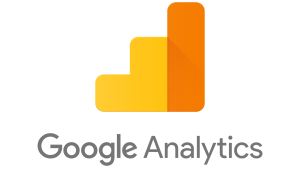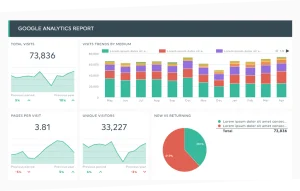What is Google Analytics?

Google Analytics is a web analytics service offered by Google that tracks and reports website traffic. It gives you valuable information such as:
-
How many people visit your blog
-
Where your visitors come from
-
Which posts and pages are most popular
-
How long users stay on your site
-
What devices and browsers they use
Why Should WordPress Bloggers Use Google Analytics?
Here are some major benefits:
-
Audience Insights: Know who is visiting your blog—demographics, interests, and locations.
-
Content Performance: Identify your top-performing posts and topics that attract more readers.
-
Traffic Sources: Understand which platforms drive the most traffic—organic search, social media, referrals, or direct visits.
-
User Behavior: Track what users do on your site and where they drop off.
-
Improve Monetization: Use insights to increase ad revenue, affiliate conversions, or product sales.

How to Add Google Analytics to WordPress
There are two main ways to integrate Google Analytics into your WordPress blog:
1. Using a Plugin
The easiest way is through a plugin. Some popular choices include:
-
MonsterInsights (most popular)
-
Site Kit by Google
-
ExactMetrics
Steps :
-
Install and activate the Site Kit plugin from your WordPress dashboard.
-
Connect your Google account.
-
Allow permissions and verify ownership.
-
Connect Google Analytics and complete setup.
2. Manual Insertion of Tracking Code
For advanced users:
-
Sign in to Google Analytics and set up a new property.
-
Get the tracking ID or Global Site Tag (gtag.js).
-
Paste the code into your WordPress theme’s
header.phpfile right before the</head>tag.Caution: This method requires theme editing and is not recommended unless you’re comfortable with code.
Understanding the Google Analytics Dashboard
Once your blog is connected, it may take a few hours to start collecting data. Here’s what to look for:
-
Real-Time: See live users on your blog.
-
Audience Overview: Check user counts, sessions, and bounce rates.
-
Acquisition: Understand where your visitors are coming from.
-
Behavior: Analyze which pages/posts are being viewed most.
-
Conversions: If set up, track goals like email signups or purchases.

Tips for Using Analytics Effectively
-
Set up Goals to track conversions (e.g., newsletter signups).
-
Use Segments to analyze specific audiences.
-
Monitor bounce rate and average session duration for quality traffic.
-
Compare data over time to measure growth.
Final Thoughts
Integrating Google Analytics into your WordPress blog is a must if you’re serious about understanding your audience and improving your blog’s performance. Whether you’re a hobbyist or a professional blogger, the insights you gain can help you make smarter decisions and create more impactful conten.